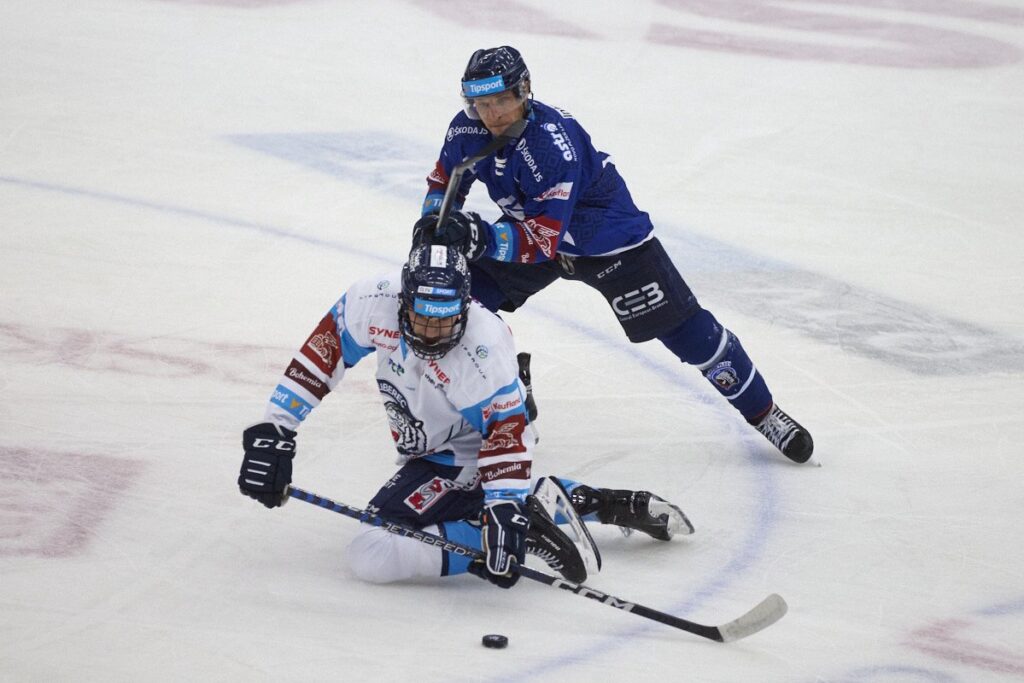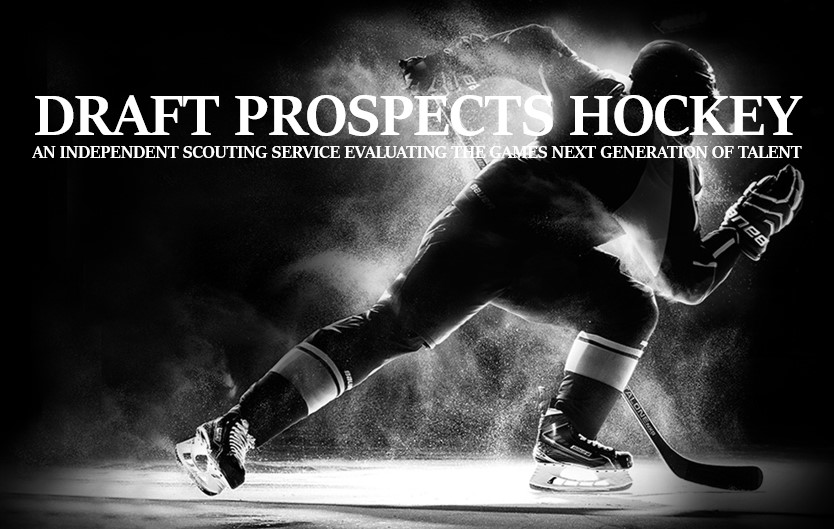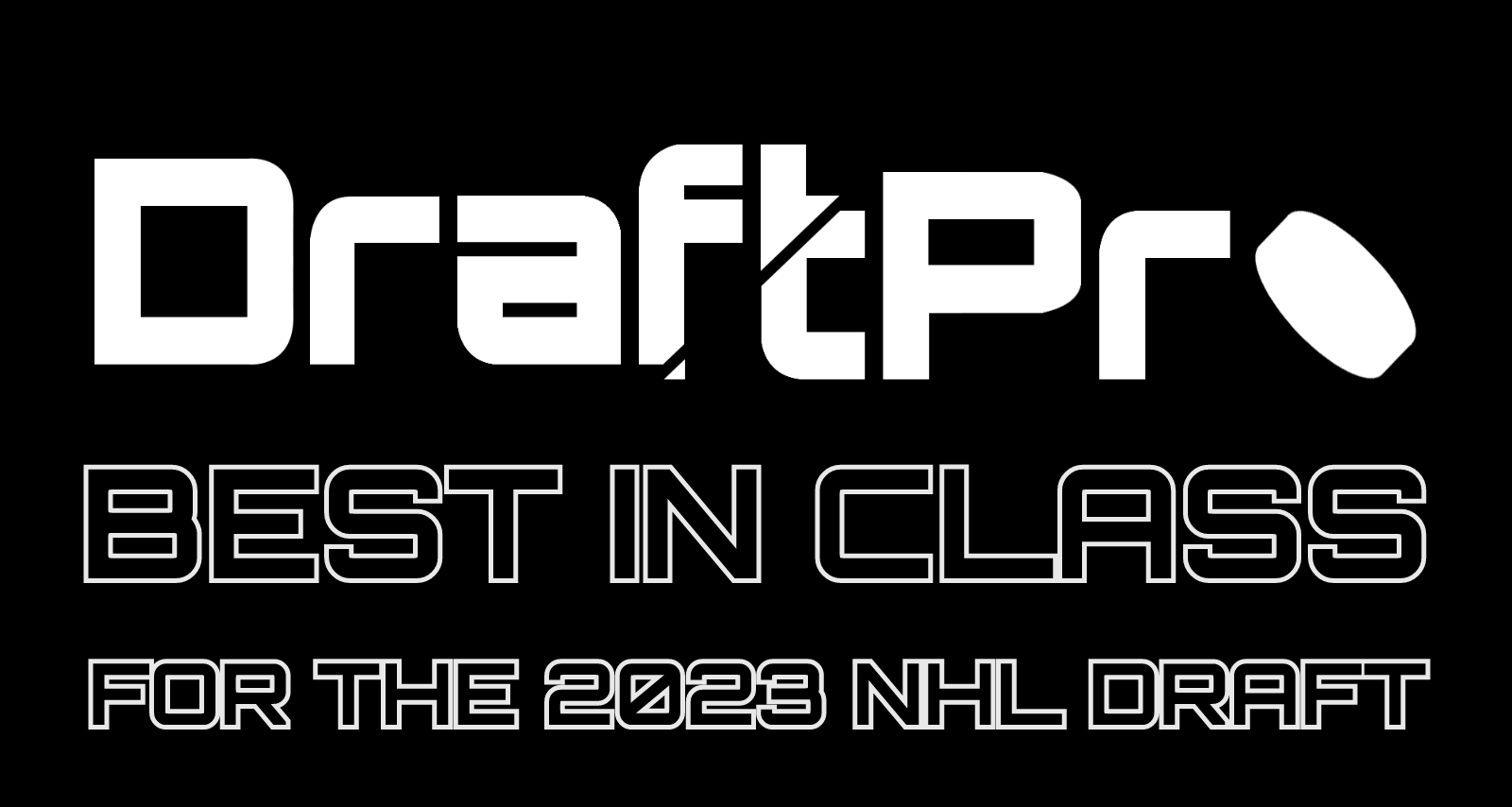Top 10 Defensive Defensemen in the 2023 NHL Entry Draft
By Isaiah Bouchard
The 2023 NHL entry draft is getting ever closer to hockey fans, and the excitement fans have for who their teams are going to draft this year is ever higher as the regular seasons across the globe are coming to an end, and playoff season is just around the corner. And there is a lot for fans to be excited for this year, as the draft is looking like one of the strongest in years.
Connor Bedard is looking increasingly like a franchise-level player, rivaling the likes of Sidney Crosby, Alex Ovechkin, Nathan Mackinnon, Austin Matthews, and Connor McDavid. Adam Fantilli would have been a first-overall pick in arguably the last six drafts, Leo Carlsson is the next big center to come out of Sweden, and he is a must-grab in the top 5. And, of course, there is the Russian sniper: Matvei Michkov, who, despite being signed to the KHL until 2026, is so good that any team picking in the top 5 will be more than willing to wait for the Russian star.
But after the big 4 in this year’s draft, who fills out the remaining slots is always an exciting mystery come draft day. Teams must allocate their scouting resources to best support the organization’s roster on draft day. Who needs the top defensemen? Say, over-the-top sniper or goaltender? That is why we at DraftPro are excited to present an in-depth look at every position and who best thrives in that position. Who is the best sniper? The best power forward? offensive defensemen? Hopefully, after this 8-part series, all these questions will be answered.
Seven DraftPro scouts were asked their top 5-7 players for the following positions: sniper, playmaker, two-way forward, power forward, offensive defenseman, defensive defenseman, two-way defenseman, and goaltender. Their lists were recorded separately, and then once all seven scouts handed in their lists, their results were compared to one another. The final lists you read here determined the average each player placed. This is not a ranking of the best players overall, simply a ranking of who is the best for each given position. Players may be placed on multiple lists, as many players are not one-dimensional, and can not be forced into one category.
Thank you to the following scouts for providing their lists: Jared Brown, Matt Hnatiuk, Tyler Karoway, Andrew LeBlanc, Murray Caldwell, Andy Miller, and Jody Horak.
The defensive defenseman, or the shutdown defenseman, has been around in hockey since players wished for their net to not be scored on. Back then, it wasn’t uncommon to see defensemen prioritize size and physicality over speed or any kind of offensive qualities. Their points will be low, rarely cracking 10 assists, and scoring a goal was out of the question. Nowadays, defensemen are expected and allowed to do a lot more on the ice. As a result, the traditional defensive defenseman has become less common in modern hockey. But that doesn’t mean a really good defensive defenseman can’t find any success in the game or favor with their coach. So who plays the best defensive hockey in the draft? Well, there is no better way to answer that question than to list out DraftPro’s Top 10 defensive defensemen.
Because the defensive defenseman is becoming increasingly uncommon, it was difficult to find ten players to put on this list. So, as a result, there are only two honorable mentions to give: Matteo Mann and Theo Lindstein.
Tom Willander, Rögle BK J20, J20 Nationell, #32-42 overall (1st-2nd Round).
“Willander uses his excellent skating and four-way mobility effectively on both sides of the puck. He can lead the rush and act as a fourth forward occasionally off the Ozone cycle. Then he uses his feet to manage the opposing rush and close his gaps quickly when the carrier is along the boards, forcing them into making a challenging play with the puck.” – Jared Brown.
It’s fair to say that Tom Willander operates more as a two-way defenseman rather than a pure defensive defenseman, but that is true for many on this list. As mentioned earlier, pure defensive defensemen are becoming rarer these days. But that doesn’t mean defensemen with defensive qualities are fading in relevance, far from it, and that is precisely why Willander is so intriguing as a prospect. With excellent skating qualities, Willander shows just how much the defensive strategies have shifted in the game. He also has a solid frame to him, so it is likely we will see his defensive game develop even more so as he gains the confidence to throw his body around.
Kaden Hammell, Everett Silvertips, WHL, #97-117 overall (3rd Round).
“Hammell’s shutdown positioning and brute strength stop anyone coming into his zone. Strong on his stick and pushes the play to the walls to negate any scoring chances.” – Tyler Karoway.
At 6’2″ and over 180 lbs, Hammel is a flashback to the days of old for defensive defensemen. Playing on a ‘not bad but also not good team’ in Everett also makes his -3 plus/minus not too shabby either. I know plus/minus triggers people, but I can only cite their height and weight so many times. In all seriousness, Hammell is a good option for the later rounds, and many gem defensemen are often found in rounds 3-7.
Brady Cleveland, University of Wisconsin, NCAA, #93-103 overall (2nd-3rd Round).
“Cleveland is a big defender who typically positions himself well and makes good reads. He is an average skater but uses his size and reach to compensate at times. Cleveland can get caught flat-footed and take penalties occasionally, but he is at his best when he has a bit of a mean streak and plays physically.” – Andy Miller.
Playing most of his games in the USDP, Cleveland has over 100 penalty minutes! This may seem like an alarming stat, but it’s not always so clear. One just has to look at the traditional role of the enforcer or antagonizer type of player to see the value they can bring to the team. Getting under players’ skin and rallying your teammates behind you are excellent qualities. Cleveland also finished his year in the USDP with a +18 +/-, which reflects he doesn’t let these penalty minutes get in the way of his defensive game.
Andrew Gibson, Soo Greyhounds, OHL, #81-91 overall (2nd Round).
“Gibson is a big defender who defends well but also has a bit of an offensive side to his game. He makes good breakout passes and has demonstrated some good hands in tight. Gibson does need to be aware of elite level players/skaters on the opposing team so that he does not get caught flat-footed.” – Andy Miller.
Almost over 200 lbs at 18 years old, while also being 6’3″, Gibson has a good chance at being drafted this year on his physical size alone. On top of that, he’s a steadfast defender who can provide some offensive assistance from time to time. He had a great season in the NOJHL in his younger years, winning many awards for his time with the Soo Thunderbirds. Now he’s slowed down slightly in the tougher OHL competition, but not enough for scouts to dismiss him. Not at all, in fact, as he still makes the top 100 in many overall rankings. Gibson could just have a rockier path than most in his journey to the NHL.
Jakub Dvorak, Bili Tygri Liberec, Czechia, #50-60 overall (2nd Round).

“He’s got good mobility and a rangy active stick to confidently defend the rush and keep attackers at bay, away from the middle of the ice. Also possess the big frame to play physical man-on-man and has a strong stick to be harder on picks to win those important puck battles in the Dzone.” – Jared Brown.
Coming in at 6’5″ and 205lbs, I feel like I’m announcing a pro wrestler rather than a 17-year-old hockey player. Dvorak may just be the largest skater in the top 100, maybe even the whole draft, and that is why he is currently sitting in the 2nd round selection at the time of writing this. Dvorak plays interesting for a big player, as he has solid skating behind him, helping get in position and avoid the cliched ‘pylon’ insult thrown towards many big bulky defensemen. Being 17 years old, Dvorak is only going to get bigger, so he will be a very interesting player to see develop for sure.
David Reinbacher, EHC Kloten, National League, #16-27 overall (1st Round).
“Reinbacher’s tight gap control, blend of mobility, strong defensive stick checking, and physicality make him highly effective at shutting down the rush. He can stop the cycle as he knows how to close players off along the perimeter and pin them while a teammate comes in to recoup the puck.” – Jared Brown.
A perfect example of how defensive techniques have changed in hockey, Reinbacher prioritizes speed and mobility to shut down offense in a very effective way. He has excellent motor which helps him utilize these techniques more effectively and also helps him recover faster. Reinbacher’s performance at the World Juniors showcased his playstyle’s effectiveness, as one could see the momentum shift when he stepped onto the ice. He was always willing to throw himself in front of any opponent, no matter how outmatched his team was.
Oliver Bonk, London Knights, OHL, #23-33 overall (1st-2nd Round).
“He always seems to be in the right place at the right time because he has such strong awareness on the ice. He also is very strong defensively and displays excellent gap control when backing into his zone. When defending in his zone, you can expect effective, consistent play with the added bonus of quick puck movement to get the puck out of his end.” – Matt Hnatiuk.
Speaking of momentum shifting, we now look at Oliver Bonk. He plays a very similar style to Reinbacher, but his style is more effective in more situations. He’s excellent at breakout passing and can naturally shift his game to an offense-focus blue liner. Bonk seems to have many advantages to his game, but his excellent defensive awareness and solid passing are two to definitely take home. However, Bonk appears to be more focused on offense, which is a shame because his defensive abilities are pretty high. He would be a very effective shutdown defenseman if he wanted to be. We will have to wait and see how he develops.
Maxim Strbak, Michigan State University, NCAA, #49-59 overall (2nd Round).
“I found Strbak to be a great partner and would work well with Brzustewicz or Bonk as he has some offensive skills but thinks defense first. He gets in the passing and shooting lanes and is comfortable in both ends of the ice.” – Andy Miller.
Playing in the U18 and U20 Sarja leagues before coming to the USHL and now NCAA, Strbak’s success in a variety of situations and leagues is a testament to his skill as an all-around defender. His defensive skill, in particular, transfers best from league to league, as his defensive positioning is one of the best in the draft. As Andy mentioned, he would be a great partner to pair with more offense-focused defensemen, as he can cover for his buddy when the game starts to heat up in the Dzone. This sounds dirty, but it isn’t. This is just how hockey people talk.
Dmitri Simashev, Loko-76 Saroslavl, MHL, #19-29 overall (1st Round).
“Reads and anticipates very well defensively, makes good breakout passes, has a great shot from the offensive blue line, and is not afraid to skate it up when the opportunity presents itself.” – Jody Horak.
Another big player, standing just a little under Dvorak at 6’4″, Simashev is another steadfast, smart defenseman who knows how to play his role well. This type of defenseman isn’t flashy but is a crucial player on your team. Simashev offers that defensive stability while also easing pressure and helping to shift momentum with his breakout passing. Arguably the purest defensive defensemen on this list, it is nice to see someone like Simashev succeed, excel at his game, and get recognition from scouts. He’s a hard player to predict where he will be picked in the draft, as his rankings range from late first round to early third. But no doubt he will be a highly valued asset to his team, and coaches will love his defense-first mindset.
Cameron Allen, Guelph Storm, OHL, #35-45 overall (2nd Round).

“A stay-at-home defenseman who is positionally sound and strong in front of his own net.” – Jody Horak.
Cameron Allen is an old-school defenseman in many ways. He loves playing physical man-on-man hockey, has excellent shut-down positioning, and can make great passes to make him a bit of a two-way defenseman if needed. But where Allen shines is his tenacity and drive to play. He led Canada to gold in the Hlinka Gretzky Cup in 2022 and was seen actually leading out there on the ice. Fighting for his teammates and standing up for his coach. He’s every coach’s dream defenseman, making him undoubtedly one of the best overall in the draft. While he may fall short in individual skill-based qualities like skating, shooting, puck control, etc. Allen arguably has one of the best mindsets out of all the defensemen in the draft. He’s going to play for his team and play the style of game that he needs to play. So while he may not be the best defenseman overall, Cameron Allen of the Guelph Storm is the best defensive defenseman in the 2023 NHL draft class.
For more information on the 2023 NHL Draft class be sure to pick up your copy of the comprehensive DraftPro 2023 NHL Draft Guide.

